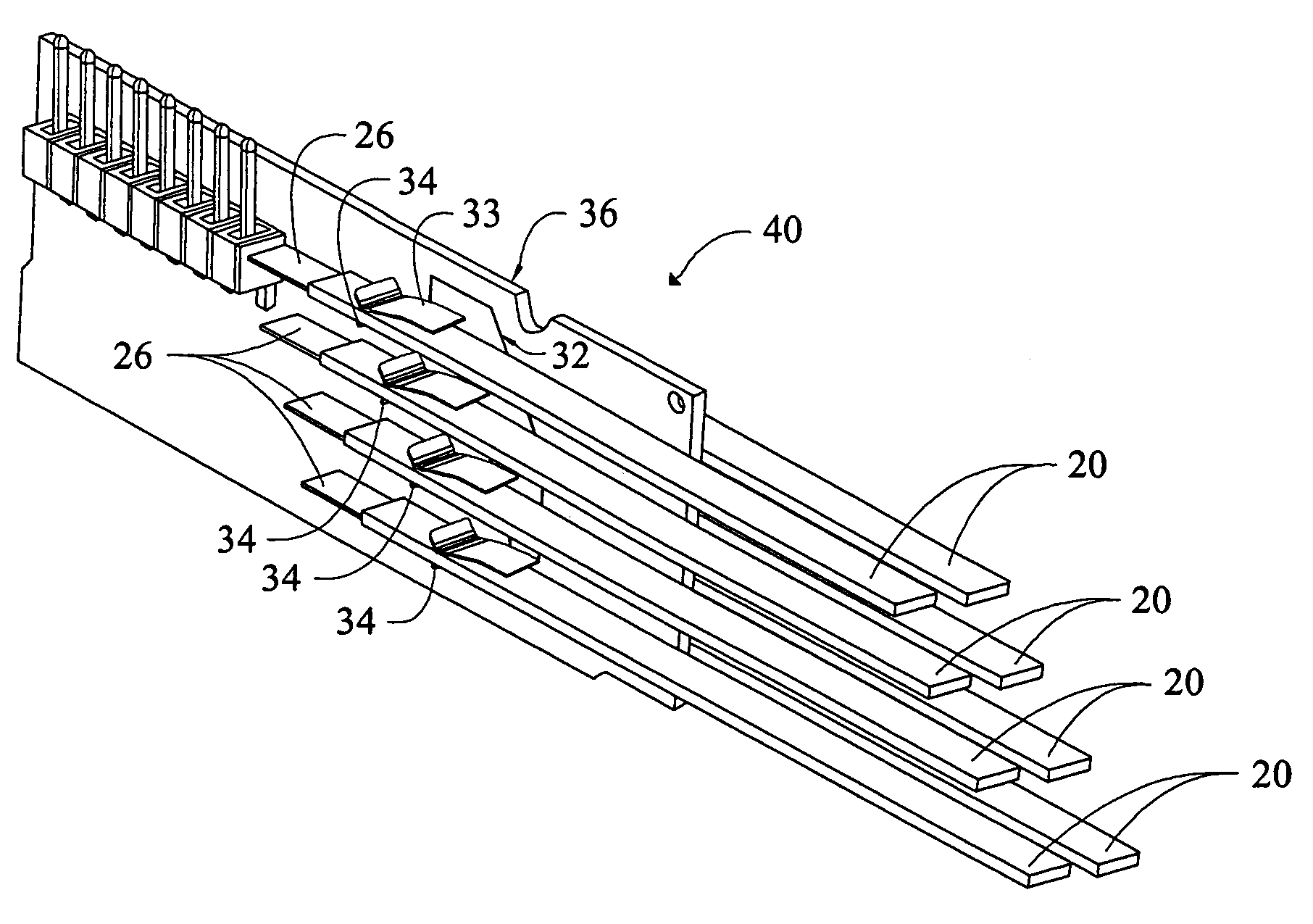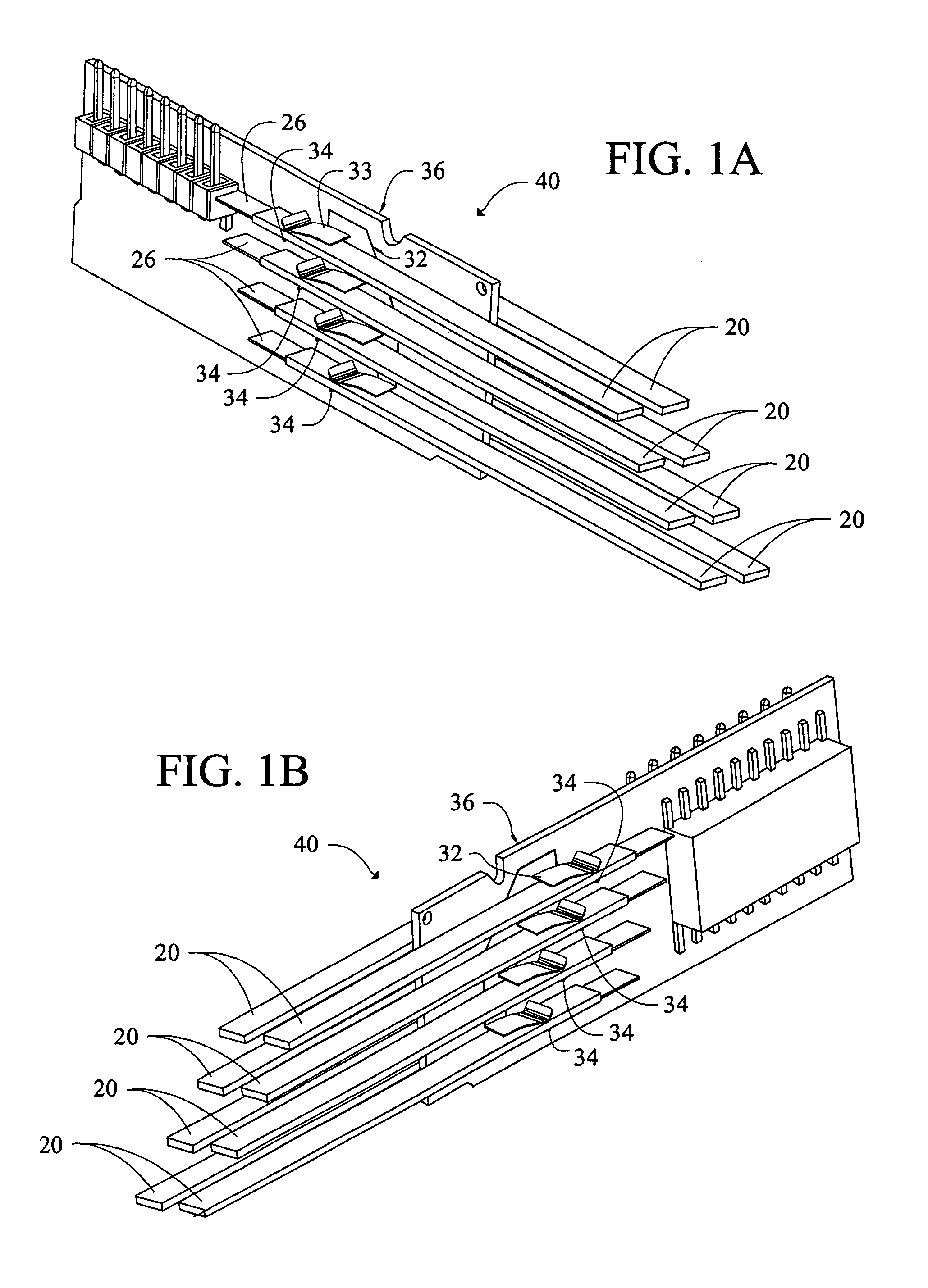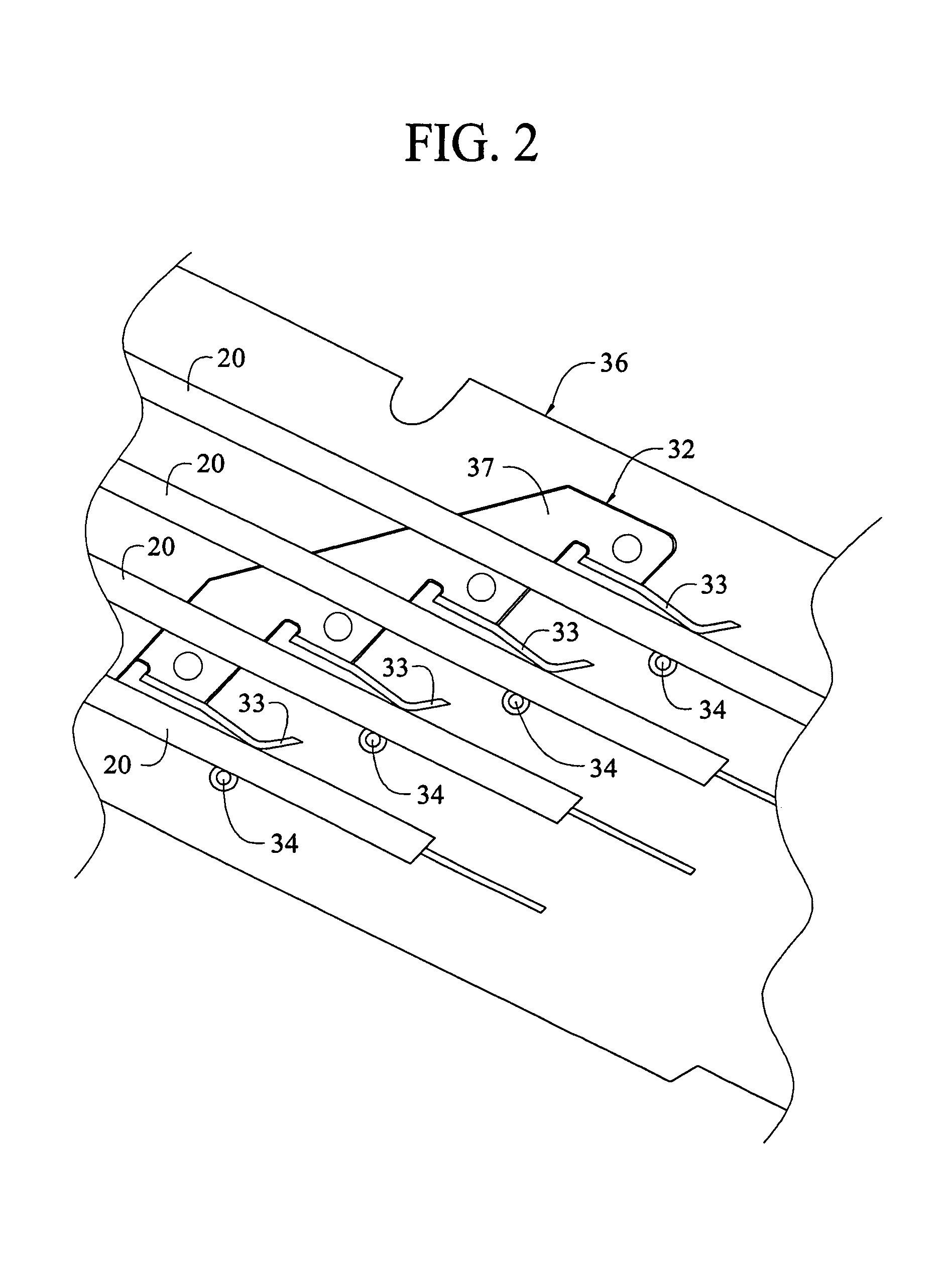Electromechanical tactile cell assembly
a technology of electromechanical and tactile cells, applied in the field of can solve the problems of increasing the manufacturing cost associated with each braille cell, the accuracy of hand-soldering manufacturing techniques, and the inability to manufacture and maintain electromechanical tactile cell assemblies, so as to improve the manufacturability and reliability of the device, improve the accuracy of hand-soldering manufacturing techniques, and improve the effect of tactile pin maintenance and bimorph reed replacemen
- Summary
- Abstract
- Description
- Claims
- Application Information
AI Technical Summary
Benefits of technology
Problems solved by technology
Method used
Image
Examples
Embodiment Construction
[0027]Referring now to FIGS. 1A and 1B there are shown perspective views of opposite sides of an electromechanical tactile cell 40 incorporating features of the present invention. While alternations are possible to the number and placement of bimorph reeds 20 without departing from the invention, FIGS. 1A and 1B illustrate an embodiment in which eight reeds 20 are conductively secured to a printed circuit board 36, four on each side. The reeds are held in place using a multiple element conductive support 32 in combination with a conductive fulcrum pin 34. In addition to securing the piezoelectric reed to the printed circuit board, these support elements also provide electrical contact and assist with proper alignment of the reeds. To reduce manufacturing costs, the multiple element conductive support 32 and the conductive fulcrum pin 34 are adapted for surface mount technology to be placed on the printed circuit using automated placement equipment. The piezoelectric reeds are then i...
PUM
 Login to View More
Login to View More Abstract
Description
Claims
Application Information
 Login to View More
Login to View More - R&D
- Intellectual Property
- Life Sciences
- Materials
- Tech Scout
- Unparalleled Data Quality
- Higher Quality Content
- 60% Fewer Hallucinations
Browse by: Latest US Patents, China's latest patents, Technical Efficacy Thesaurus, Application Domain, Technology Topic, Popular Technical Reports.
© 2025 PatSnap. All rights reserved.Legal|Privacy policy|Modern Slavery Act Transparency Statement|Sitemap|About US| Contact US: help@patsnap.com



